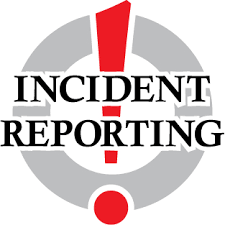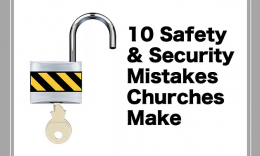Incident Reporting – A Tool For Improving Child Safety

Children are active! Bumps, bruises, and scrapes are bound to happen with the children in your care. Having a well-designed process to document incidents is imperative and a good tool for improving child safety. Additionally, beyond the minor scrapes, those caring for children have a moral obligation to protect children and are mandated by law to report suspected child abuse and neglect. So with both ends of the incident spectrum needing to be included, how does an organization go about covering its bases? A good incident report is the first step, followed by information on when and how to use the report.
According to GuideOne Insurance, an incident report is defined as, “Any time an accident happens that requires the injured child to stop normal activity and/or receive first aid or medical attention; an accident report form must be completed. This report is also filled out if an incident occurs that requires outside intervention.” Source: The Risk Management team of GroupOne Insurance.
A good incident report can be used to assist in mitigating risk for churches and schools. It should include details about the accident including photos, treatment given, witnesses, and the steps that will be taken to prevent another occurrence in the future.
It’s important to note that prior to an incident report being completed, a child should receive any/all the appropriate actions required to ensure the safety and well-being of the child. Next, the child’s parents should be notified immediately. After that, the incident report should be completed by the teacher or ministry leader who was present when the accident occurred. Upon completion, the form should be given to the Ministry Director and a copy provided to the parents or guardians.
Currently slips and falls are the number one risk, but here are some additional examples of situations that would require an incident report be used:
- A child becomes ill or receives an injury that requires First Aid or medical treatment while in your care; an example includes a child falls and breaks a bone and/ or is bleeding enough to require first aid.
- A child receives a bump or blow to the head or other visible injury regardless of treatment.
- A child is transported by ambulance from your facility.
- An unusual or unexpected incident occurs that jeopardizes the safety of a child, such as a child left unattended, there is a vehicle accident (with or without injuries), or a child is exposed to a threatening person or situation.
- There is an allegation or reasonable suspicion of abuse of a child.
Important: Consult your state’s mandatory reporting requirements for further information on abuse reporting.
It’s important to note that volunteer teachers are not mandated by law to report abuse. However, if there are any concerns about such an incidence, that be shared with the Children’s Ministry Director so the appropriate action can be taken.
In the end, having a good incident report and process in place is an important step in keeping all involved safe and secure. For more safety tips and best practices visit the KidCheck blog.
Sources:
http://childrensministry.org.au/safety-and-protection/forms-templates/
Sunday School That Works: Group Publishing


